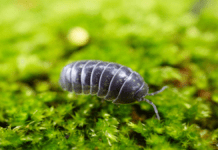Australia is a massive continent that usually has a wet season from November to April. But autumn which is from March to May is the period that Australia receives the most rain. For example, during that period Sydney gets an average of five inches of rain a month.

During this period, flooding causes thousands of money spiders or sheet-web weavers to balloon from the ground to the sky. Balloon silk from the spider spinneret glands on their abdomens allows them to flee an area where they may die from flooding. They throw spider web threads up in the air and use them as parachutes and move as large colonies through the sky.

When there is flooding rain, millions of these web weavers crawl to the highest point they find in their habitat. Then they send silk strands and they are lifted on air currents. The majority of the web weavers die during this journey because of harsh weather conditions and are eaten by predators.
Once those spiders take flight, they find a new home. Then sometimes they end up at human houses seeking shelter by crawling through tiny crevices. Sometimes instead of that, they build a new home by weaving a huge web.

A few days after flooding rain, when locals step outside their houses, they see something that looks like snow draped on poles, trees and even on tall grasses. It is actually not snow, it is quite large spider webs. If you are in Australia, don’t get confused, it’s not snow. It’s the start of the spider season. Lots of residents in Australia have shared photos of gossamer webs blowing in the wind. These webs can also blanket the grounds and they can make look like snow along county-side roads.
There are more than 2,000 different species of tiny spiders throughout the world. But they are not a threat to people. And also spider snowing doesn’t only happen in Australia. Greece and United States have faced the same events.



















